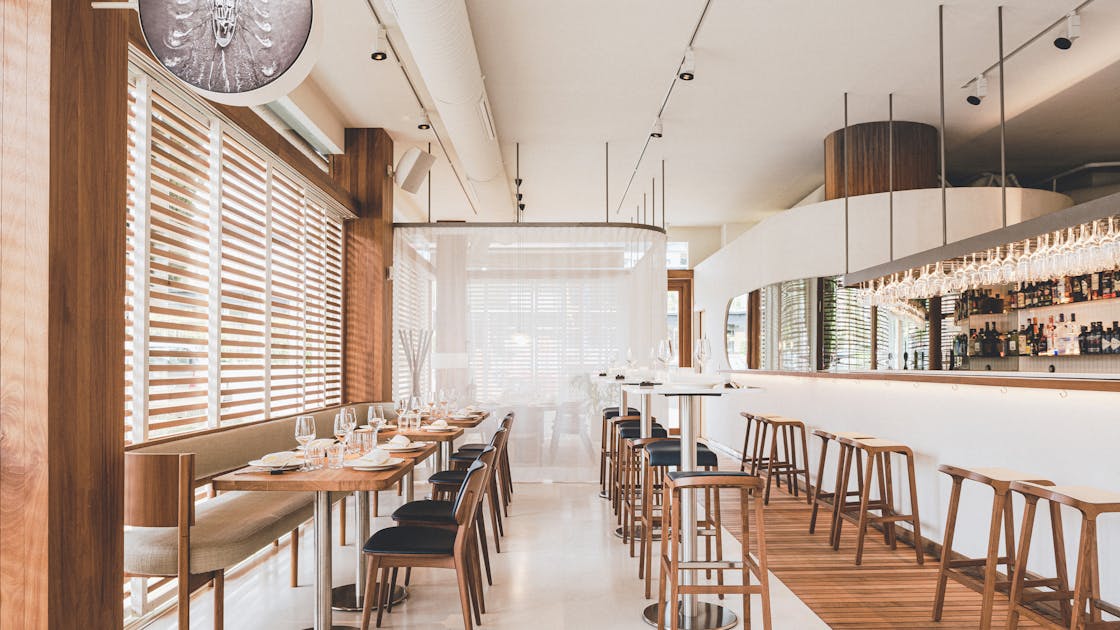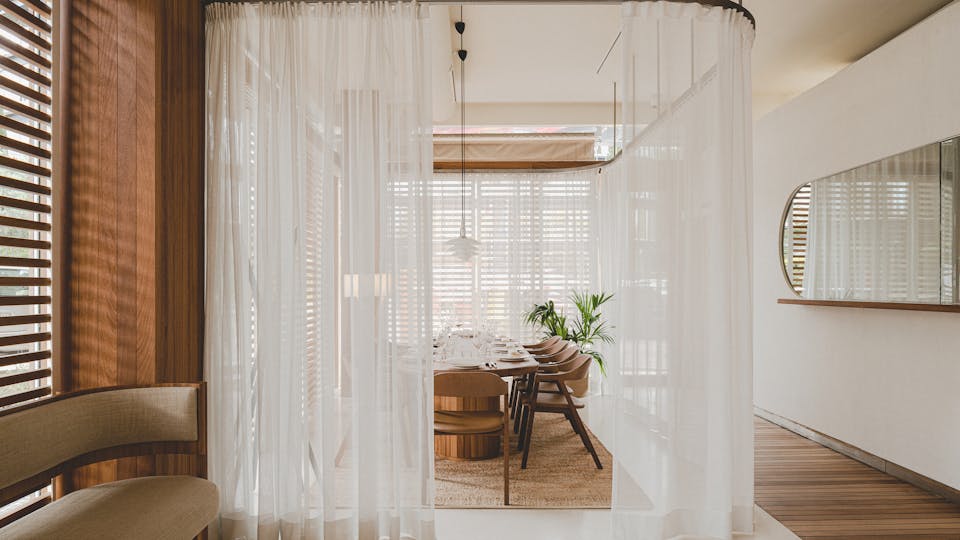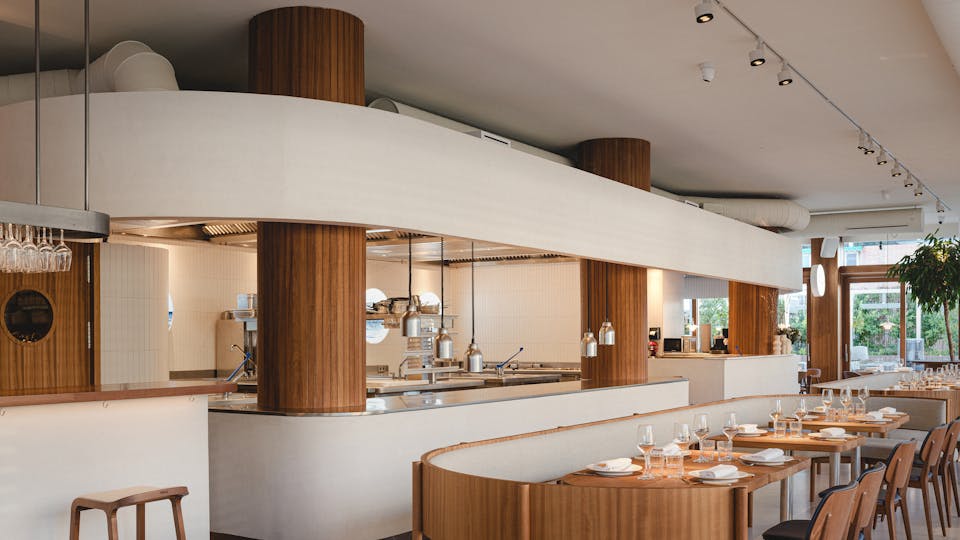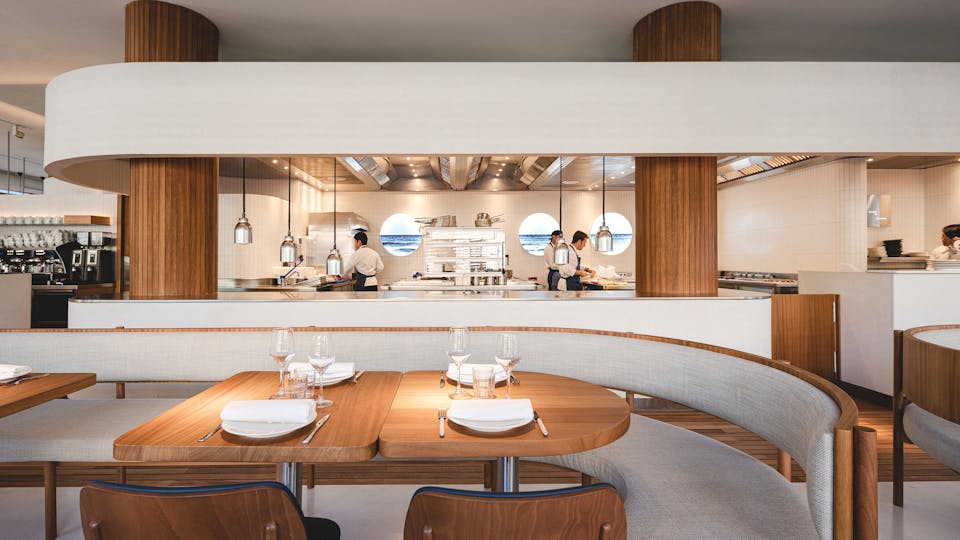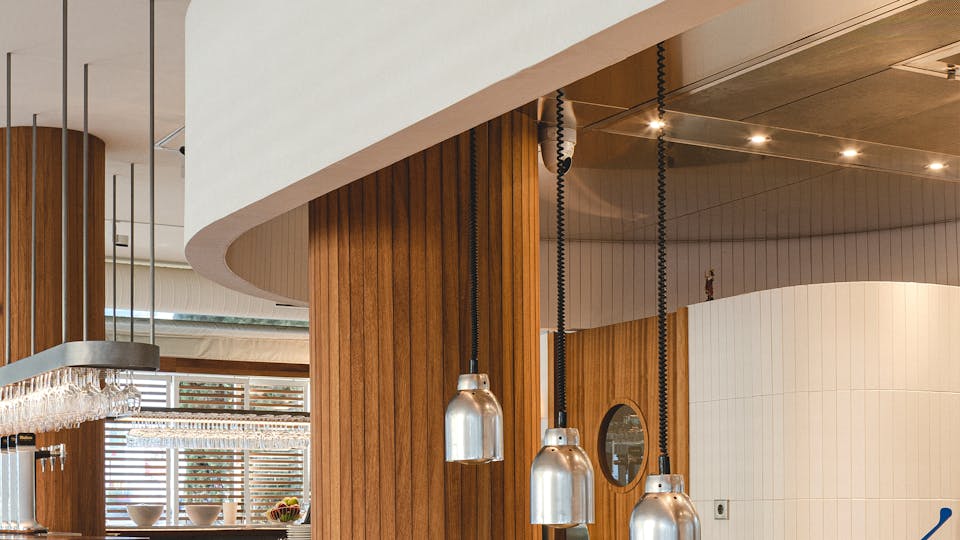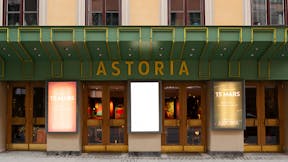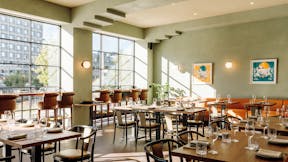Grupo Cañadío’s La Maruca restaurant in Madrid centralises the cuisine, flavours, and spirit of the Cantabria region in Spain’s north coast – its name a tribute to a small, rocky beach in the area. Menu favourites include fried squid from the bay of Santander and a cheesecake recipe that dates back to 1981.
In 2022, La Maruca made their mark in the El Viso neighbourhood with their third branch in the city – a 5-minute walk to the Avenida de América metro stop. Behind the design of the new restaurant is Zooco Estudio, an architectural firm whose design ethos is guided by the objective of design “as an added value”. Zooco had also designed the restaurant’s branches in the Salamanca and Chamartín districts, but for their latest undertaking, they took a different approach: a distinctly nautical one.
A Restaurant Design Concept that Pays Homage to Cantabria
Teak wood, polished cement, and ceramic converge with a soft, neutral palette. Zooco Estudio were inspired by the rationalist architecture of Santander, and their references include the Isla de Torre Sailing School and its Royal Maritime Club. Consequently, the restaurant’s interior is characterised by coastal undertones and a corresponding materiality.
It is also distinguished by the duality between its exterior and interior. Spaces flow smoothly from one another – as does natural lighting during the day – and a sense of contemporary transparency and continuity overtakes the restaurant. Little is hidden. An open kitchen emerges from the centre, as though the engine room of a ship; curved, organic volumes that evoke the shapes of ships and the rationalist façades of Cantabria.
A Ceiling that Seamlessly Emerges from the Volumes
The design of the restaurant features a large quantity of hard surfaces, which by their very nature tend to reverberate sound. An acoustic solution was needed to improve the restaurant’s soundscape and to minimise the risk of the bothersome vocal phenomenon known as the Lombard Effect. “There was no need for any prior consultation. We had an obvious need for a ceiling with acoustic absorption capacity”, said Zooco Estudio architect Sixto Martín Martínez. A glass façade bathes the restaurant with natural lighting and provides calming views of the exterior – but its large surface area drastically increases the risk of poor acoustics.
To address the restaurant’s acoustics, Zooco Estudio opted for 300m2 of Rockfon Mono Acoustic, a monolithic ceiling solution that offers Class A sound absorption within a smooth appearance that integrates seamlessly while reflecting daylight.
“From the beginning of the project, it was clear to us that we not only needed a high-performance acoustic ceiling, but one that has the most neutral appearance possible. The project seeks to replicate an outdoor environment in an indoor space, so the marked ceiling layout had to disappear”, added Martínez. The product fulfils these requirements: the total absence of joints, the option of a plain colour, and high acoustic absorption”.
La Maruca restaurant exemplifies the ways in which a balance between form and function can be achieved to result in a space that reflects the essence of Santander and its connection to the coast.

